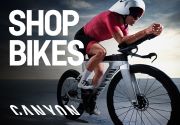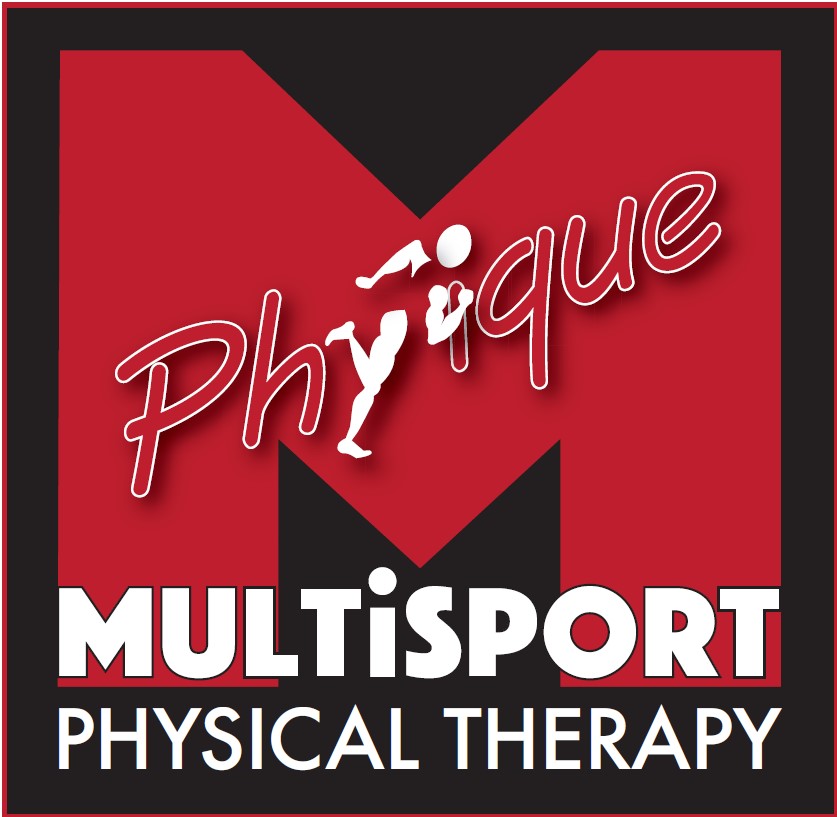Bob Babbitt
TCSD Conversation by Craig Zelent
I had the pleasure recently to talk triathlon with the legendary funky dude, Bob Babbitt. Bob is a TCSD member as well as a member of the Ironman Hall of Fame and the USA Triathlon Hall of Fame. It is an honor and a thrill to share Bob’s story. We are so lucky to have this guy in our club!

"Bob Babbitt in his frog outfit at the Mini Muddy Buddy Austin event with double above knee amputee Cody McCasland"
Craig: Who was the most influential person in your life?
Bob: The most influential person in my life was my dad, the amazing Jack Babbitt. He and his three brothers worked seven days a week at the auto parts store that my grandfather had started back in the 1920’s. Each brother would get one day off per week and they would rotate taking holidays like Christmas Day, New Year’s Day and Thanksgiving off. Long hours, customer service and hard work was what the Babbitt family represented. The only day that the auto parts store was ever closed in its long history was the day of my grandfather’s funeral.
When I was about 16 years old, I remember my dad bringing me into his office at our house and walking me through the stocks and bonds that he had been investing in for years and years. He told me something that day I have carried with me ever since: “Bob, I don’t care how good of a doctor or lawyer or carpenter you are,” he said. “There are not enough hours in the day to support your family for the long haul just by working. You have to invest, you have to find a way to make money when you’re sleeping.”
When we launched Competitor Magazine back in 1987, we had a very small staff and no money, so it became imperative that we create long term relationships with our readers, our clients and our writers and photographers to help promote not only our magazine, but also these young sports of triathlon, running and cycling. We knew we couldn’t do it alone, that it would take a village.
When Jeffrey Essakow, Rick Kozlowski and I founded The Challenged Athletes Foundation in 1993 to help our buddy Jim MacLaren after his second accident, my dad’s words again came into play. We had the three of us plus Virginia Tinley and Tabi King working on putting this new charity together. We needed the community to embrace the cause and to raise money through their efforts as well as ours. For any charity to survive, you need to be able to figure out a way to make money when you’re sleeping.
Craig: You went to the greatest university in the world – the University of Illinois which happens to be where I went to school. What was your career after graduation?
Bob: When I finished college at the University of Illinois in 1973, In moved back to the Chicago area and started working at a place called Central Baptist Children’s Home where I worked with emotionally disturbed children. It was a great experience and I learned a ton about patience during those two years. Then I moved to San Diego in 1978 and took a job at The Children’s School in Sorrento Valley. I ran the PE program there for seven years - it was called Bob Time- and I had the opportunity to go out and play for about six hours a day and get paid at the same time. It was the best! During the summers I put on Bob’s Sports Camps and we played racquetball, baseball, capture the flag and swam in a local pool. I started working at the school in 1978 and that’s when I started running and doing this new sport called triathlon. Most of the early races were at Fiesta Island and my roommate and I raced as many of them as we could. My roommate’s name? Ned Overend. Ned went on to become one of the most decorated mountain bikers in history, but this was way before mountain bikes had been invented and he was working as a mechanic at San Diego Suzuki.
Craig: What was your experience like at the 1980 Ironman?
Bob: Ned and I read about this event in Sports Illustrated called the Ironman Triathlon after the 1979 race. Tom Warren, who ran Tug’s Tavern here in San Diego, had won the race and there had been only 15 people in the race and only 12 finished. Ned and I tracked Tom down to learn more about this Ironman thing. It’s not like you could go online and sign up for events back then! We bought bikes at the police auction for $75 each. Mine had been burned in a fire and the back end was charred. I added a fuzzy raccoon seat cover and foam grips to the handlebars plus I bungie corded a Radio Shack radio to the bike so I could listen to tunes along the way. I added flat proof solid-rubber tires since I had no idea on how to change a flat tire plus I added panniers, to the back so I could carry a sleeping bag and tent with me during the Ironman. For some reason I thought the Ironman was a two-day adventure, that we swam 2.4 miles and rode 56 on day one, camped out, and then rode back to Waikiki and ran the marathon. Who knew?
On race day in 1980 there were 108 of us on the start line for the third ever Ironman and the last one on Oahu. Because of the huge surf and because ABC was going to televise this crazy event on Wide World of Sports, the swim was moved from the Waikiki Rough Water Swim location to Ala Moana Channel. The surf was so huge they didn’t think they could run the event on the designated race day, and if the event had to be postponed from Saturday to Sunday, ABC had another commitment and couldn’t film the race. Ned and I were happy since the surf at Sans Souci Beach, the original site, was 8-10 foot that weekend, we had done all of our training in a 15 yard pool in Mission Valley and we would have definitely died if the race hadn’t been moved. Dave Scott and the Navy SEALs who were entered that year were definitely not happy that the swim was moved from the ocean to the calm waters of the channel.
We had no idea how to fuel for the Ironman so I had my crew carry Hawaiian Sweet Bread and Gatorade for me to eat and drink throughout the day. My crew treated me to a Big Mac, fries and a coke 25 miles into the bike ride and to a root beer snow cone at about mile 80.
When I finished the bike ride, I heard the sound of a boom box when I entered the transition area. My crew had a bamboo matt laid out and asked if I would like a massage. Who wouldn’t? I had a 45 minute massage between the bike and the run and felt awesome! Then I started the marathon after weighing in. They had a rule back then that you had to stop and get weighed a few times during the bike ride and the marathon. If you lost 5% of your body weight they would pull you from the race. When I got off the bike, I weighed in and went right back to eating Hawaiian Sweet Bread and drinking Gatorade. At about mile four they weighed me again:
“Hey,” said a voice from the other end of the walkie- talkie.“ Can you give me that number again? This guy gained four pounds…you can’t GAIN weight doing this thing!”
I did.
When I was running the last part of the marathon up Diamond Head with my crew driving behind me in their Fiat convertible, I knew that this event, that this thing called the Ironman, was going to change my life. I was expecting to see big crowds at the finish, but instead I saw a line of chalk across the road and a light bulb hanging above me. A voice from the darkness in the park yelled ‘Hey, you…are you in the race?’ When I answered yes, the response came immediately back: “You’re done!”
That was it. No flowered lei, no medal, no bands or crowds or music.
Just one fellow finisher doing one arm push-ups in the park.
But I knew immediately that I was changed, that finishing this Ironman event had given me a level of confidence in myself that I had never had before. I had earned this business card that day in Oahu card that told me that I could accomplish anything I put my mind to. If and when things got tough in life, I could draw on that experience. If I could finish the toughest day in sport, in my mind I could accomplish absolutely anything.
Craig: What was your path to a career in journalism and media?
Bob: After finishing the Ironman in 1980, I put together a fun event at The Children’s School that I called the IronKids Triathlon. Pretty creative, right? I went to Tijuana and bought Incredible Hulk plaster banks as prizes for the kids and we combined a short run, an obstacle course and a swim across the pool in the complex so the kids could get a feel for the sport of triathlon. I called up Mike Plant at Running and Triathlon News Magazine and asked him if he was interested in covering my new event. He said he was too busy and that I should write it up. I had never written anything before, but I put together a short article. Mike liked it and asked me to keep writing. That led to a series of articles I wrote for Mike that somehow touched a nerve. If ‘The Running Wino’ didn’t upset enough people, maybe ‘The Old Fart of the Month’ could be a tad more offensive. Then came my phony advice column called ‘The Reverend Campagnolo Minister of Triathlism’ and for some reason people seemed to respond to the articles.
And I realized I loved to write.
Mike ended up hiring me to be the Los Angeles Editor for Running and Triathlon News in 1984 and Lois Schwartz, the art teacher at our school, decided to join me as our LA photographer. The two of us would drive to running, triathlon and cycling events every weekend and we savored every minute of it. We met great people, covered awesome events and got to tell inspirational stories. What could be better than that?
Craig: How did Competitor begin?
Bob: In April of 1987 Running and Triathlon News closed down unexpectedly and Lois and I were out of a job. We went to meet with the owners of both Southwest Cycling Magazine and California Bicyclist Magazine to ask them about working together on a magazine that would cover running, triathlon and cycling. Neither group was interested and told us that cycling was their passion, that triathlon was a fad that would be gone in five years and that they would never put a skinny runner on the cover of their magazine.
When we returned home, Ron Mirolla from The Sports Page, a running store in Pacific Beach, and Larry White from San Diego Vitamins, called Lois and I and asked us to meet with them and some friends. They presented us with a check for $17,000 and told us to start our own magazine.
We rented out 200 square feet of space in a race director’s warehouse underneath thousands of pounds of bike racks for $200 a month and in June of 1987 came out with the very first edition of Competitor Magazine. We didn’t pay ourselves for the first two years and I lived on friend’s floors to save on rent. We had no background in business, but we were passionate about our publication, our sponsors and our readers. Nothing else really mattered.
Craig: When did the radio show begin?
Bob: Three years later, in 1990, we created Competitor Radio and it aired every Sunday night on what was then The Mighty 690 am and is now The Mighty 1090 am. Since our sports and our athletes were not that well known at that time, what if regular sports fans went from a radio chat with Wayne Gretzky or Magic Johnson to one with Steve Scott, Paula Newby-Fraser or Mark Allen? To grow Competitor, we needed to grow the awareness of our sports and our athletes among mainstream sports fans and mainstream sports media. That was the reason we created Competitor Radio. Now in its 26th year, it is definitely the longest running show in endurance sports. Back then people had to listen on live radio here in Southern California on Sunday nights to hear our show, but everything changed when we were able to save the shows and put them on iTunes and on our own website so people could listen whenever and wherever they liked. The show, now known as Babbittville Radio, not only airs on The Mighty 1090 am every Sunday night between 8 and 10 pm, it also airs on iTunes and on http://www.babbittville.com/ so our fans can get a workout in while listening to a conversation between myself and Taylor Phinney, Dave Scott, Jan Frodeno, Daniela Ryf or Kara Goucher. Over the years the world of endurance has expanded to include obstacle racing, adventure racing, running, cycling, triathlon, cyclocross and mountain biking. I just added it up the other day and I’m pretty sure we’ve interviewed over 4,000 people on our show.
Craig: Back in the day, you organized an underground Ride & Tie race at Penasquitos Canyon on Thanksgiving and Easter mornings. How did those events come about and what did they lead to?
Bob: Back in the early 1980’s, I was asked to participate in an event up in the Laguna Mountains called Ride & Tie. It was a 28 mile trail event where a team of two runners took turns riding a horse and running, leapfrogging their way through the course. Ride a few miles, tie your horse to a tree, start running. Your partner runs to the horse, gets on, rides by you and ties the horse to a tree. Simple, right? Unless you’ve never ridden a horse before. The race started with a shotgun and our horse Shasta suddenly changed his name to Lightning with smoke coming out of both nostrils by the time I tried to climb on his back four miles into the event. Eventually I was able to mount up and hold on for dear life as my horse jumped over rocks, trees and runners on his way to the front. I remember thinking to myself, ‘this is a really cool concept. We just need to lose the 2,000 pound eating and crapping machine that can kill me.’ At mile 20, there was a vet check before the horse was allowed to run the last eight miles. By the time I arrived at that checkpoint, I had run 16 of the first 20 miles and was looking forward to walking the last eight miles sitting tall in the saddle. When I arrived at mile 20, I was surprised to see Shasta being loaded into the back of one of those horsey corrals. “what’s wrong with him?” I asked. “His hooves are sore,” someone yelled back. “His hooves are sore?” I responded to no avail.
While running the last eight miles, it became very clear to me. Keep the concept…..lose the horse.
So in 1982 or so we did the first ever Ride & Tie on Thanksgiving morning. Two runners….one cruiser bike or mountain bike…..no permits and definitely no horses. It was an off-road event and Mark Allen, Scott Tinley, Scott Molina and all of the legends came out to give the event a try. It was 12 miles round trip, I was in a Turkey suit, we had spam stations instead of aid stations, and I hid stuffed animals along the way. It was a safari and every stuffed animal had a time bonus attached to it. So you didn’t necessarily have to be fast. You had to be cunning and, since there were absolutely no rules, you could steal other people’s stuffed animals or take the front wheel off their bike and toss it deep into the woods. One of my favorite moments was two-time Ironman World Champion Scott Tinley and another participant arguing over who actually should get a time credit for the four foot tall purple Barney. The event was a total hoot and everyone had a blast. Entry fee was ten cans of food per team that was donated to a local charity. We had championship belts made out of tin foil by my buddy Ben Boyd for the winners and before you knew it we had 100 teams of two showing up on Thanksgiving and Easter, since I also happened to own a bunny suit.
Flash ahead to 1998 and a meeting with the President of Brooks Shoes to put together an ad plan for Competitor Magazine. When he said he was looking for a cool new event to partner with rather than an ad package, we pitched the idea of taking my off- road ride & tie event with mountain bikes with the addition of some obstacles and a mud pit. We called this brand new event Muddy Buddy and launched with 250 teams at Camp Pendleton in 1999. Over the years the Muddy Buddy Ride and Run Series grew from one San Diego event to 18 events.
I always was a firm believer in promoting and connecting Muddy Buddy to Competitor Magazine and, when possible, with our Challenged Athletes Foundation as well. As the Muddy Buddy Series grew, we promoted it through Competitor Magazine and our radio show and only put events on in regions of the country where we either had a regional edition of Competitor or a publication that was part of our Gen A Media family of publications. As the official charity of Muddy Buddy, we generated over $300,000 for CAF over the years and showcased many of CAF’s amazing challenged athletes.
Craig: One of my greatest victories was winning the 2007 Ride & Tie with John Montanile as my teammate. I still have my tin foil belt on display at home. You have had quite a career. What is the lasting legacy of Bob Babbitt that gives you the most pride?
Bob: Of everything we have been a part of over the years, nothing has brought as much joy to my life as CAF. Watching Sarah Reinertsen become the first single above knee amputee woman to finish the Ironman Triathlon World Championship was special. To be able to witness the growth of double above knee amputee Rudy Garcia-Tolson from a six-year-old hoping to be able to walk and run one day to a 26-year-old CitiBank sponsored, Ironman Arizona finishing, four-time Paralympian and a two-time Paralympic Gold Medalist has been unbelievable.
People may not realize that CAF started to help one man, Jim MacLaren. Jim was a 300 pound football player at Yale who was going to acting class in New York City on his motorcycle when he was hit by a bus and thrown 90 feet in the air. He lived, but he lost his left leg below the knee. Jimmy became the best amputee endurance athlete on the planet running a 3:16 marathon and going 10:42 at the Ironman World Championship in Kona on a regular everyday walking leg. This was before the cool OSSUR running legs even existed.
I met Jimmy while covering him through Competitor Magazine. He was fully sponsored and was racing all around the world. In 1993 Jimmy was racing a triathlon in Mission Viejo when a van went through a closed intersection, hit the back of Jimmy’s bike, propelled him head-first into a pole and a guy who was already an amputee became a quadriplegic. From covering wheelchair athletes at Competitor, I had interviewed wheelchair bound athletes and asked them the worst part about being paralyzed. Repeatedly they told me how tough it was to be 25 or 30 years old and have mom and dad come back into their lives. They had lost their sense of self and independence because they needed help to do anything and everything.
So when Jeffrey Essakow, Rick Kozlowski and I got together to put on a triathlon for Jimmy at La Jolla Cove in the fall of 1993, the goal was to raised $25,000 to buy Jimmy a vehicle that he could drive with his hands. We raised $49,000 through the support of the triathlon community and thought our job was done. But three amputee women approached us after the event to let us know that Jimmy had been their hero and that Jimmy had inspired them to get into endurance sports. They also told us that, when someone is injured, their health insurance covers a walking around leg or an everyday wheelchair, but that anything to do with sports is considered a luxury item and not covered by insurance.
That’s when we decided to get our 5013C designation and make sure that if anyone needed a piece of equipment, travel expenses or coaching to stay in the game of life through sports, CAF would be there for them. Through the support of the wonderful world of endurance sports we have now raised north of $70,000,000 dollars and provided north of 13,000 grants to challenged athletes all over the world. Just a few weeks ago, out of our amazing state-of-the-art Deni and Jeff Jacobs Challenged Athletes Center building in Mira Mesa, we sent out over 2,098 grants worth north of $3.7 million dollars. Plus, Paratriathlon for the first time will be in the Paralympics this summer in Rio. I don’t think that would have happened without the great work of our amazing CAF athletes, supporters and the triathlon community here in San Diego.
Craig: What are your favorite benefits of membership in the Triathlon Club of San Diego?
Bob: I think the world’s greatest value is a membership to TCSD. I think the cost is $70 for the year. For that you get four aquathlons, which are my favorite events of the summer. Are you kidding me? Each Aquathlon should have an entry fee of $100! So you start with four Thursday evening races with permits, lifeguards, full on post-event buffet and chip timing. Watching the sun go down while hanging out with your buddies after an aquathlon is one of life’s great pleasures. I’m serious about this. I race upwards of 30 times a year and the very first events I put in my schedule each year are the aquathlons. There is absolutely nothing better.
Then you need to add on the Fiesta Island Triathlons, again with food and timing and actual permits and a duathlon series. That’s not including the weekly workouts and our monthly club meetings where we have one-on-one interviews with, I don’t know, only the greatest endurance athletes in history. Check out the list sometime. Mark Allen, Dave Scott, Javier Gomez, Alistair Brownlee, Taylor Phinney, Mirinda Carfrae, Rod Dixon, Chrissie Wellington, Sebastian Kienle, Meb Keflezighi and Ryan Hall are just a few of the guests we have had with us over the past few years. To me, with the amazing value TCSD brings to the table, I can’t believe we don’t have 5,000 TCSD members.
Over the years I have seen a lot of clubs become exclusive and not inclusive. Cycling groups are notorious for having first timers show up and doing nothing to make them feel welcome. TCSD has never been like that. We have been the model for inclusion. I remember when Jim McCann was the President of the club. We were at La Jolla Shores and a first timer was trying on a wetsuit for the very first time. He put it on inside out and came walking out of the bathroom. Jim walked over and very quietly said to him, “You know, I think it might go the other way.” It would have been easy for everyone to point and laugh and make this person feel awful. That’s not the way Jim or TCSD has ever been. We want everyone to love the world’s best sport and to understand that on race day, it’s you against yourself and you against the course. Yeah, there are other people in your age group, but those are your buddies who have the same goals you have: to enjoy the day, enjoy the sport, enjoy the catered workout and enjoy getting a great workout in before most people are even awake.
Craig: If you had a magic wand that you could waive over the sports world, what would you change?
Bob: Right now the sport of triathlon is flat in terms of growth. The reasons? There are a few, but in my mind we are in this awesome era of Endurance Entertainment where people have so many fun options from triathlon to running to Spartan and Tough Mudder to Gran Fondo and Color Run. Because there are so many options, triathlon has to do a better job of letting people know how great and inclusive our sport is. I think we are missing the boat by USA Triathlon not promoting the sport of triathlon at running events. You have sometimes 20,000 marathoners and half marathoners at an event and, in my opinion, the orthopedic reality is that one day, if they want to stay in endurance sports, they will need to add in some cycling and swimming and weight training. Very few people can become better runners after the age of 50, but triathlon is the Fountain of Youth. Because there is no weight bearing, you can become a better swimmer and cyclist as you age. I know I have!
Craig: It seems like you race all the time. How have you been able to continue racing and why do you love it so much?
Bob: Last July I decided to change my eating habits and eliminated bread, gluten, sugar, salt, soft drinks and alcohol. Dr. David Clayton was a guest on Babbittville Radio and I asked him for a verbal cue, something to remember when I was about to eat the wrong things. He told me the following: If it wasn’t around a million years ago, don’t eat it. And if it has a label on it, it wasn’t around a million years ago so don’t eat it. For some reason, that message made sense to me and, along with the help of my wife Heidi, I eliminated bread, butter, sugar, salt, soft drinks and alcohol. I went from 184 to 161.4 in about 16 weeks and went from 24% body fat to 16%. More importantly, my energy level is even all day and I feel better than I have in years. Getting rid of two bowling balls makes cycling and running so much easier! I have always loved racing and, over an 11 week span recently, I raced 12 times including Triton Man, Lava Man, Super Seal, Ironman 70.3 California, two TCSD Fiesta Island races plus the Boston Marathon in my Elvis suit, which I highly recommend!
Craig: What are your future triathlon goals?
Bob: My goal is to race as often as possible. I love meeting people, getting feedback on our shows and interviews. I have always believed that hanging out with 20, 30 and 40 year olds helps to keep us folks in the 65 to death category young. I’ve raced 12 races in the past 11 weeks and I’m hoping to see how many weekends I can race in 2016. Aging up to 65 is a good thing. Fun story. Some of my fellow members of the 60 to death age category were chatting before the Solana Beach Triathlon last summer about how long we were going to keep getting up so damn early to hang out in a dark parking lot. The answer was unanimous: As long as we can!
Craig: Bob, thank you so much for sharing your story. You have done so much for the TCSD, our sport of triathlon, the Challenged Athletes Foundation and everything else you have touched. Your success has not changed you. You have always been and always will be one funky dude!
Craig Zelent is a USA Triathlon Level 1 Certified Coach. Craig can be reached at 760-214-0055 or tricraigz@yahoo.com.








